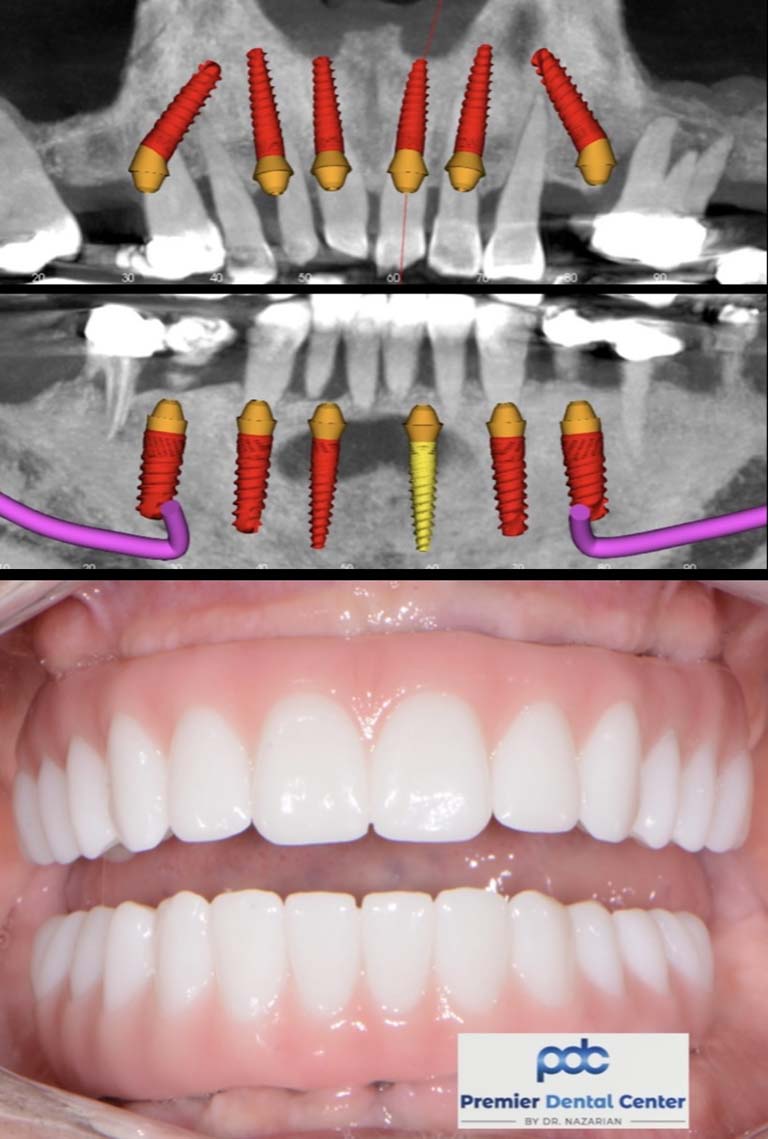The 10-Minute Rule for Dental Sense
Table of ContentsThe Basic Principles Of Dental Sense Dental Sense Can Be Fun For EveryoneThe Single Strategy To Use For Dental SenseThe Basic Principles Of Dental Sense
are medical gadgets surgically dental implanted right into the jaw to bring back a person's ability to chew or their look. They offer support for fabricated (fake) teeth, such as crowns, bridges, or dentures. When a tooth is lost because of injury or condition, an individual can experience issues such as rapid bone loss, malfunctioning speech, or changes to chewing patterns that result in discomfort.Dental implant systems include an oral implant body and dental implant abutment and might likewise consist of a joint fixation screw. Same day dental implants. The oral implant body is surgically put in the jawbone in area of the tooth's root. The oral implant abutment is usually connected to the implant body by the abutment fixation screw and prolongs via periodontals right into the mouth to support the connected artificial teeth
Cigarette smoking might influence the recovery process and decrease the lasting success of the implant. The healing process for the dental implant body might take a number of months or longer, throughout which time you commonly have a short-term abutment instead of the tooth. the oral implant treatment: Very carefully comply with the oral health guidelines given to you by your oral provider.
Dental Sense Fundamentals Explained
Implant failure can result in the need for one more surgical treatment to fix or replace the dental implant system. Recovers the ability to chew Brings back cosmetic appearance Aids keep the jawbone from diminishing due to bone loss Preserves the wellness of the bordering bone and gum tissues Assists keep nearby (nearby) teeth steady Enhances high quality of life Damage to surrounding natural teeth during dental implant positioning Injury to the surrounding cells during surgical procedure, such as sinus perforation Injury during surgery (for instance, fracture of surrounding jawbone) Insufficient function, such as seeming like the teeth do not attack together typically An experience that the tooth hangs or twisting in location arising from a joint screw loosening up Implant body failing (looseness of the dental implant body) due to systemic infection, which may be extra likely in individuals with uncontrolled diabetes mellitus as a result of neighborhood infection in bone and gum tissues supporting the implant body because of postponed recovery, which might be most likely in patients who smoke Trouble cleaning up the gums around the implant, resulting in poor oral health Without treatment gum illness Post-surgical numbness because of nerve impingement or damages Always notify healthcare providers and imaging service technicians that you have dental implants prior to any type of magnetic vibration imaging (MRI) or x-ray treatments.
FDA is not knowledgeable about any unfavorable events reported for MRI or x-ray treatments with oral implants. Dental implants systems are usually constructed from products that comply with worldwide agreement criteria of the International Company for Standardization (ISO) or ASTM International. These requirements have details of what makes a safe product.

An oral implant is a framework that changes a missing tooth. With screw-like devices, the surgeon inserts a dental implant into the jawbone, and it acts as an anchor for a synthetic tooth, called a crown.
More About Dental Sense
Some people are not eligible for oral implant surgical procedure. It is for dental doctors to operate people with: acute illnessuncontrollable metabolic diseasebone or soft tissue disease or infectionIf these issues are solved, a person can have the surgery. In, dental cosmetic surgeons abstain from operating people with: If people with any of the above undertake dental implant surgery, there is a higher danger of the implant falling short.

Oral dental implant surgical treatment is a tailored procedure. It's not the exact same for every person. But the following provides a basic review of what you can expect your dentist, dental doctor, periodontist or prosthodontist to do: Position the dental implant operatively. Offer you time to recover. Affix the post and last crown, bridge or denture.
Next off, your cosmetic surgeon will very carefully place the dental implant right into your jaw. If your dental implant is near the front of your mouth, your dental expert will make a short-term tooth for you to wear till you recover.
A Biased View of Dental Sense
Your copyright can inform you what to expect in your scenario. During the recovery phase, your jawbone must fuse to the dental implant. This procedure, called osseointegration, is vital for stability and long-lasting success. This procedure can take anywhere from 3 to nine months. In some instances, it may take longer.
When your dental implant heals, your dentist can connect the joint (tiny connector article) and your last reconstruction (crown, bridge or denture). This normally takes concerning one hour to finish and may need a 2nd small surgery. You should not feel any type of discomfort throughout your oral implant treatment because your provider will certainly utilize medicine to numb your gums.
Comments on “The Buzz on Dental Sense”